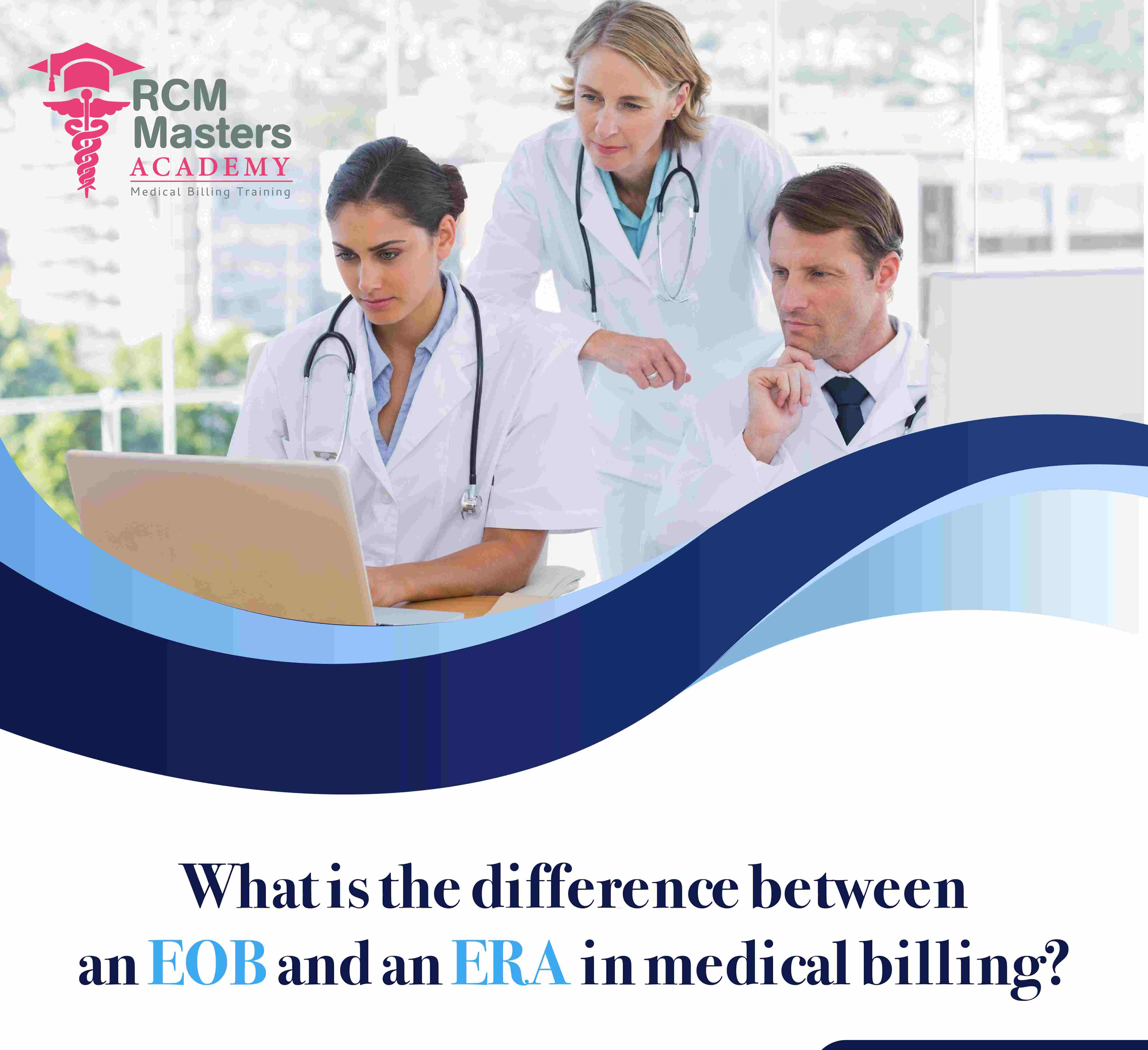 info@rcmmastersacademy.com
info@rcmmastersacademy.com

Medical billing is a complex process that involves numerous steps and documents. Among these, two terms that are often used interchangeably are EOB and ERA. However, they are not the same thing, and understanding the difference between them is crucial for healthcare providers, insurance companies, and patients alike.
What is an EOB?
EOB stands for Explanation of Benefits. It is a document that insurance companies send to patients after a medical claim has been processed. The EOB explains what services were provided, the amount charged, and the amount the insurance company paid. Additionally, the EOB will show any amounts that the patient may still owe to the healthcare provider. This document is primarily used for patients to understand the costs associated with their medical treatment and to see how their insurance benefits were applied.
What is an ERA?
ERA stands for Electronic Remittance Advice. It is a digital document that is sent to healthcare providers after a medical claim has been processed by an insurance company. The ERA provides details about the payment, including the payment amount, the date of payment, and the reason for any denials or adjustments. Essentially, the ERA is a report that allows healthcare providers to reconcile their accounts receivable and to track the status of their claims.
The difference between EOB and ERA:
While the EOB and ERA are both related to medical billing and contain information about claims and payments, there are significant differences between the two documents.
1. Purpose: The primary purpose of the EOB is to inform patients of the amount they owe for medical treatment and to explain how their insurance benefits were applied. On the other hand, the ERA is a document that is sent to healthcare providers, and its primary purpose is to provide detailed information about payment processing and claim status.
2. Recipients: The EOB is sent to patients, while the ERA is sent to healthcare providers.
3. Format: The EOB is typically a paper document that is mailed to patients, while the ERA is a digital document that is sent to healthcare providers electronically.
4. Content: The EOB provides information about the services provided, the amount charged, the amount paid by the insurance company, and any amounts owed by the patient. The ERA provides information about the payment amount, the date of payment, and the reason for any denials or adjustments.
5. Timing: The EOB is typically sent to patients after a claim has been processed, while the ERA is sent to healthcare providers in near real-time after a claim has been processed.
Why understanding the difference between EOB and ERA matters?
Understanding the difference between EOB and ERA is essential for healthcare providers, insurance companies, and patients. Healthcare providers need to reconcile their accounts receivable and track the status of their claims, which is done through the ERA. Patients, on the other hand, need to understand the costs associated with their medical treatment and how their insurance benefits were applied, which is done through the EOB.
Insurance companies play a crucial role in processing medical claims, and the information provided in both the EOB and ERA is essential for them to determine their financial obligations accurately. By understanding the difference between EOB and ERA, insurance companies can better communicate with healthcare providers and patients and ensure that claims are processed accurately and efficiently.
In conclusion, while the terms EOB and ERA are often used interchangeably, they are not the same thing. Understanding the differences between these two documents is crucial for healthcare providers, insurance companies, and patients alike, as they play a crucial role in the medical billing process. By understanding the difference between EOB and ERA, healthcare providers, insurance companies, and patients can work together to ensure that medical claims are processed accurately and efficiently.
You can enroll for our Online Medical Billing Training here: